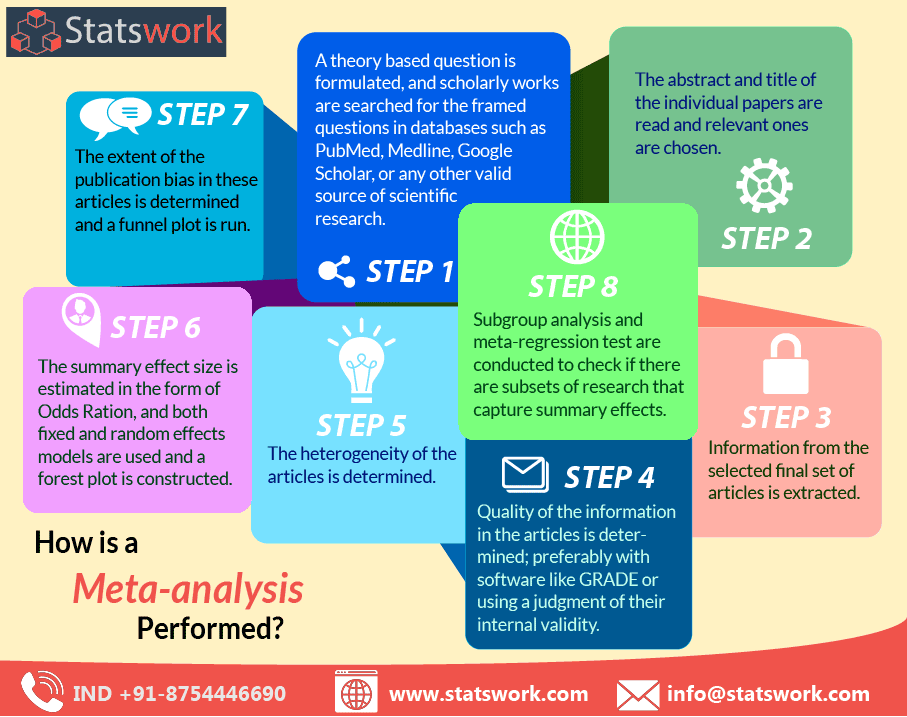
Meta-analysis: definition and general procedure.
Meta-analysis is the statistical integration of conceptually similar studies to produce a weighted average closer to the true value which all studies intend to achieve, albeit with a certain degree of error due to various factors. The Meta-analysis is an analysis and integration of studies aiming to produce high quality evidence to a question. The following are the general steps involved in all meta-analysis procedure.
A theory based question is formulated scholarly works are searched for the framed questions in databases such as PubMed, Medline, Google Scholar, or any other valid source of scientific research.
The abstract and title of the individual papers are read and relevant ones are chosen.
Information from the selected final set of articles is extracted.

